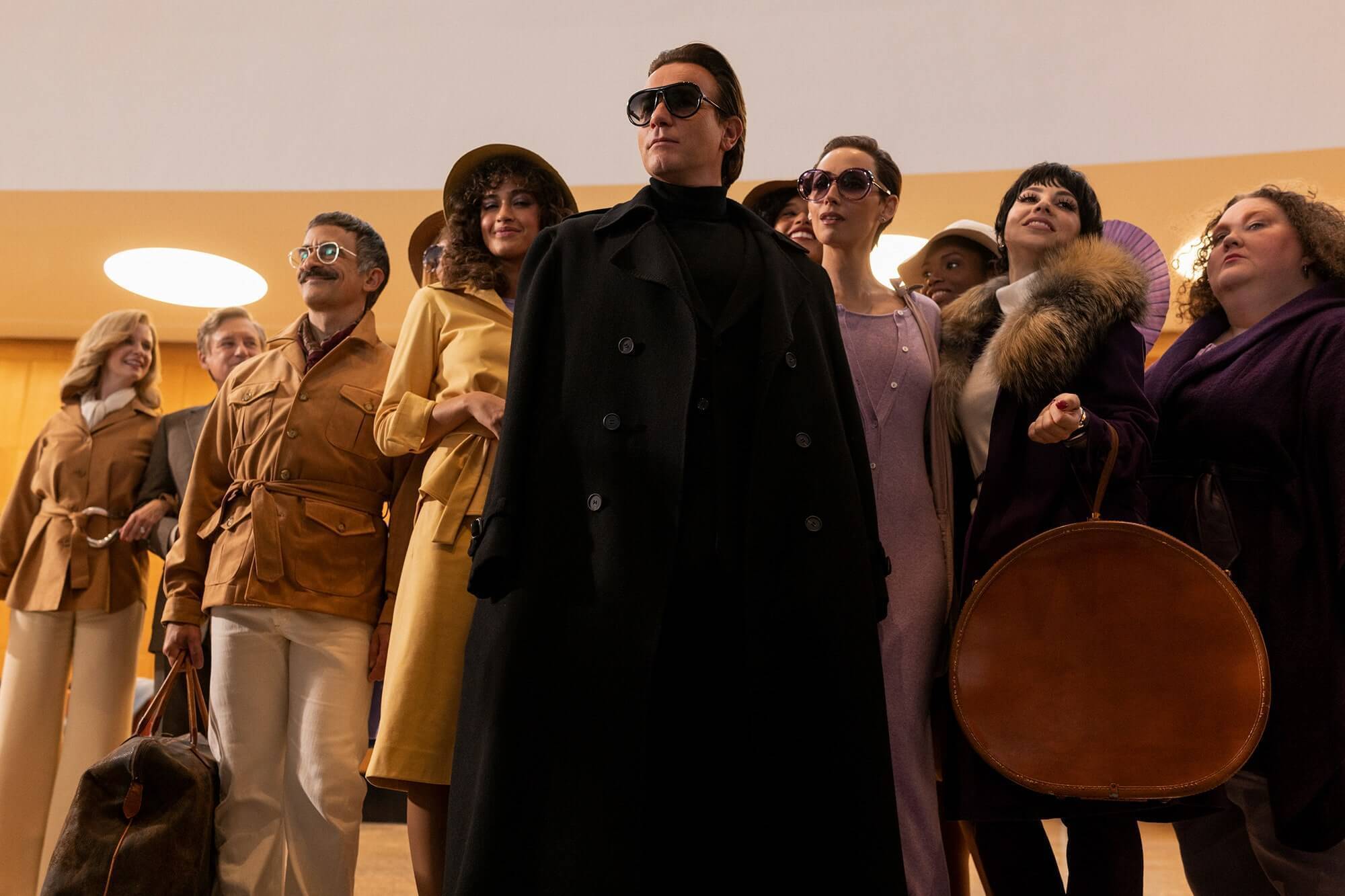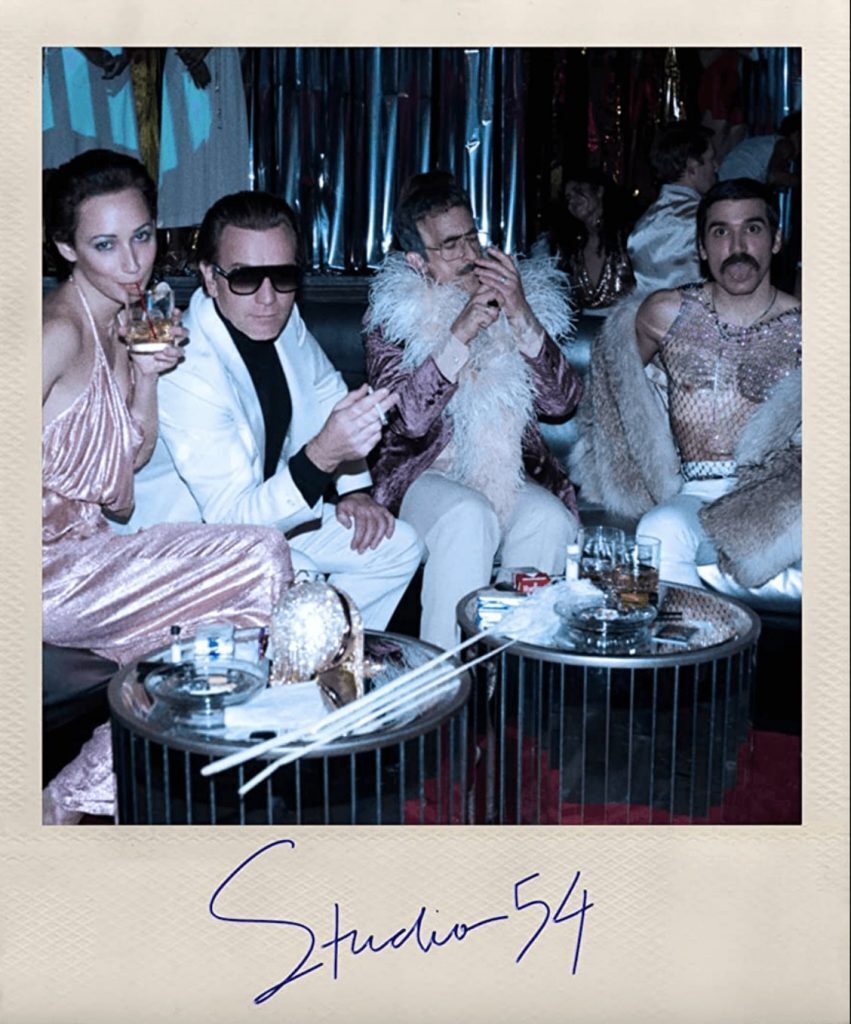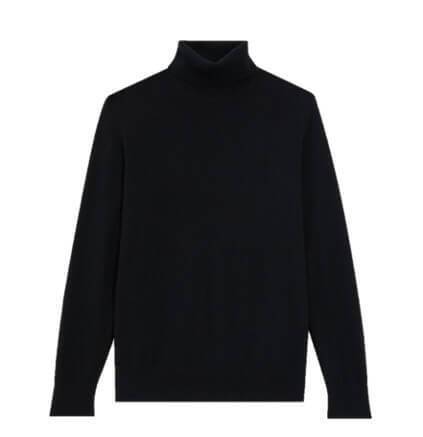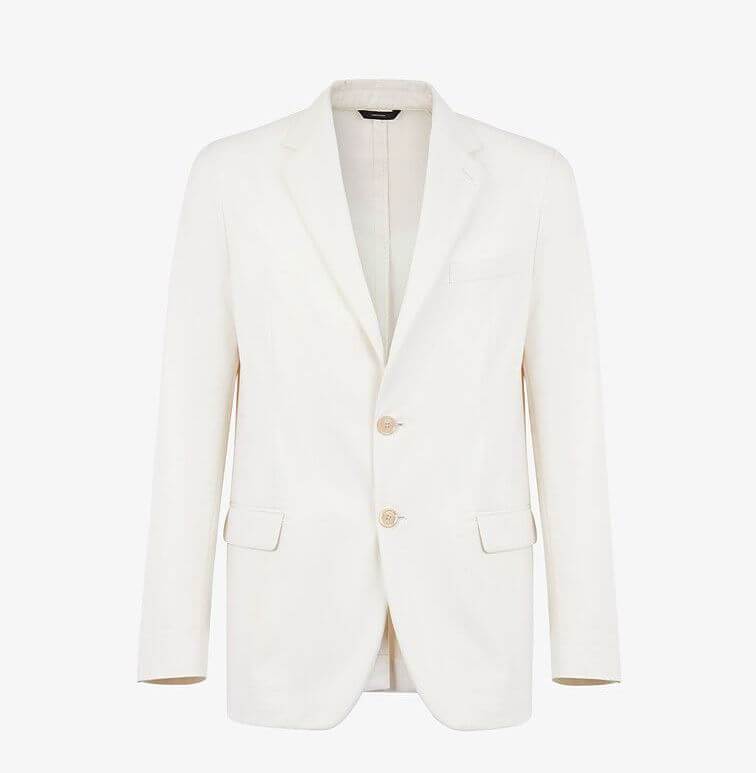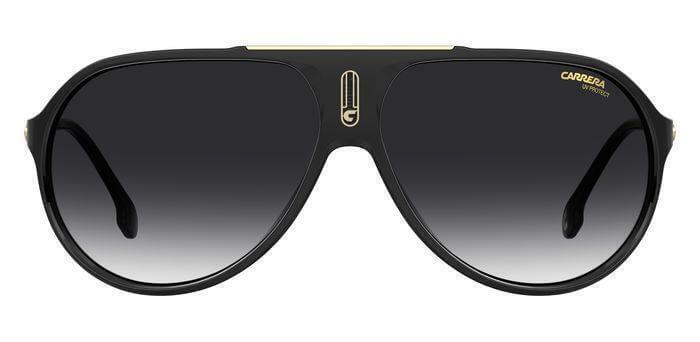Style
Halston Review: All Style, No Substance (But the Style is Great)
It’s difficult to know where exactly to begin when writing about American television writer Ryan Murphy. In Netflix’s Halston, Murphy brings his signature gloss to the limited series profiling one of the preeminent fashion designers of the 1970s. As tends to be the case, however, the shimmer and sheen of a Ryan Murphy vehicle are only ever skin deep. And instead of diving into the rich and complicated textures of Halston’s life, it pulls together a threadbare depiction of the celebrated fashion designer.
Table of Contents
When discussing Mr. Murphy, it becomes almost impossible to judge his projects as standalone endeavors. Especially when the problems that seem to plague his sensibility and judgment are woven throughout every show or movie to which his name is attached. As a singing nun by the name of Maria once famously crooned, “let’s start at the very beginning…”
The first time we see Halston is as a child. Long before his name was stitched into nearly every garment worn by an American in the ’70s and ’80s. Long before he was rubbing elbows with New York’s elite. Long before he was having meals flown in on private planes. When we first see him, his name isn’t even Halston – It’s Roy.
Becoming Halston & Conflicting Influence
Roy Halston Frowick stands alone in rural Evansville, Indiana, 1938. He’s found a small handful of feathers that line the floor of the chicken coop outside his childhood home. He collects them eagerly, but focus is quickly pulled when he hears the clatter of dishes breaking, and his mother sobbing as she tries to avoid the blows dealt by his ruthless and abusive father. We immediately cut to the following moment, after the storm has passed. And the young boy walks to his mother, who is alone and trying to compose herself. “I made something for you…” says the young Roy. And as she wipes the tears away from her face, the boy unveils his mother’s hat and places it on her head. Only, it isn’t her hat. It’s a newly spruced-up accessory. Adorned with the feathers the small boy collected earlier. In that moment, her face lights up, and Roy has made his mother happy.
Reader – I have just recounted the only sincere and tastefully handled moment in the entire show. And it’s over in the first two minutes.
It should be noted that the creator of this limited series isn’t Ryan Murphy – but instead the lauded playwright and television writer/producer Sharr White. Mr. White’s plays have attracted the praise of New York theater critics, and most recently has worked on acclaimed shows like The Affair and Generation. Interestingly, in spite of his “creator” title, his name is noticeably absent from the writing credits of the already short five-episode series. And his name is nowhere near the top of the show’s listed main executive producers.
This is speculative, of course, but one has to wonder if what wound up on the screen is representative of Mr. White’s initial vision. Or is this the result of Ryan Murphy butting in and tailoring the show to his often-questionable view of the world?
Murphy’s unprecedented deal with Netflix and power to greenlight has boasted some of the more coolly received projects in the last couple of years. See: Hollywood, The Prom, Ratched. And it would seem those that succeed with Murphy attached, have source material written by someone else, or are projects in which he is not heavily involved. See: The Normal Heart, Feud.
The problem Ryan Murphy faces is not unlike the one that crippled this show’s main subject. Ryan Murphy loves excess. Big characters! Big personalities! Characters who proclaim how they feel instead of having their behavior be exhibited through action or subtext. He bulldozes his way through a story and, along the way, loses all of the nuance that helps to inform what makes a human life compelling and complicated.
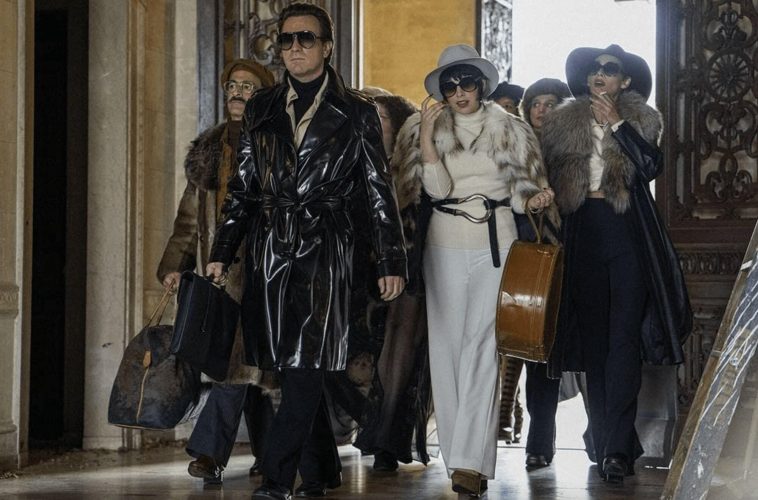
Source Material & Character Portrayal
The show’s source material is based on a 1991 biography entitled Simply Halston. The book was released a year after his death, and at approximately 300 pages, I’m going to assume that Steven Gaines (the author) helped to paint a more complex rendering of the fashion mogul than what we see in the show.
After the opening sequence, we smash cut to 1961. Halston’s star is on the rise after he designs Former First Lady Jackie Kennedy’s famous pillbox hat that she wore to her husband’s inauguration.
And it is at this moment, we encounter our first problem. The casting. Ewan McGregor – though a fine actor – at 50 seems decidedly too old to be play the mid-thirties Halston. But frankly, his age is the least of the actor’s problems. From the jump, McGregor speaks with the affected voice that the real Halston learned in order to belie his rural upbringings, so as to fit in with the New York cosmopolitan crowd — a trait he is later called out on by his lover after he indicts Halston for chameleon-ing into something he isn’t. But the audience never sees this shift.
From the moment McGregor is onscreen, he is settled into the version of Halston the artist himself wanted the world to see. Flamboyant, cunning, grand. And the actor’s performance never shifts gears. He remains relatively one-note, and creates a character that quickly becomes grating and almost impossible to connect with. I kept asking myself throughout the show, “Is this a man we’re supposed to root for?”
Now onto the more central problem of McGregor’s casting – his sexual orientation. McGregor is straight, playing gay. And while his performance isn’t disrespectful (although it does veer into camp at times), it does speak to the larger issue of diversity in front of the camera. Ryan Murphy, himself an out, gay man, has come under fire for this before. Most recently with his casting of James Corden in The Prom. As long as I live, I never want to hear Mr. Corden utter the word “scruff” again…
I suppose the real question here is, does this negatively impact the show?
I absolutely think straight actors can convincingly play gay – no question. It’s been done before. But with a show like this one – whose story is thin, and barely lived in, it does beg the question of whether or not an out, gay actor could have helped to build out a more carefully drawn portrayal of the character – instead of the barely-there sketch that exists now.
Where’s Matt Bomer when you need him?
The Muse & Women’s Liberation
After Halston’s booming success with the Former First Lady, he decides he wants to branch out and resolves to design his own fully-fleshed-out fashion line. The initial outing is a failure. Every piece is labeled uninspired and “lacking signature.” Dejected, but not deterred, Halston bemoans his most recent outing as a designer over drinks with his eventual creative partner, Joe Eula (played winningly by David Pittu). It’s clear Halston needs some inspiration. A muse. And because Ryan Murphy has never met a cliché he didn’t like, in that exact moment a new, wide-eyed singer walks onstage by the name of Liza Minnelli.
Endeavoring to play the endlessly idiosyncratic singer/actress must, in many ways, be a thankless task. Iterations of Liza Minnelli have been played out everywhere. From the stages of Broadway to the Snatch Game on RuPaul’s Drag Race. I can empathize with Krysta Rodriguez’s desire to honor Liza’s mannerisms while not creating a caricature of the legendary performer. But it’s in this push and pull that her portrayal falls flat. The look is there. But she doesn’t do enough to emulate Minnelli’s character to make us feel like we’re watching a person we recognize. Nor does she create something unique enough that we feel as though we’re watching something new. Her performance, not unlike McGregor’s, feels frozen in one place.
It’s through this friendship with Minnelli that Halston has found the woman who’s helped to spark his creativity. And she encourages him to find his own authentic signature as a designer.
What’s rather striking about much of what Halston created at the peak of his fame is how timeless it is. And just how much it reflected the culture as it existed – particularly for women. Women were out in the world in ways the country hadn’t seen before. Women’s Liberation encouraged women to forge new paths for themselves, and to have autonomy over their lives. And Halston was right there to dress them for the occasion. He capitalized on the realization that if women’s lives were going to be varied, their wardrobe would need to be too. He would dress them for the office, and then a drink after work. Was Halston a brilliant designer? Absolutely. But the real marker of his success was how he was able to observe the way in which the world was changing and adapting around that. Not that the show gets into that at all…
Life in the Fast Lane & Decline
As the Halston name gets launched into the stratosphere, he becomes a ubiquitous force. His brand isn’t just about clothing anymore. It’s about a lifestyle. Clothing, perfume, luggage, status, money, celebrity, sex, parties. And, oh, there were parties! Halston became one of the earliest fixtures of New York’s hottest nightclub, Studio 54. And he reveled in all of the extravagance that place had to offer.
It’s at this time his drug use begins to accelerate. True to the era, his drug of choice was cocaine. And soon, he would be blowing thousands of dollars on cocaine per day. As his drug usage intensifies, his moods become even more erratic. Which is saying something considering that this show would have us think that Halston vibrated at a 10 all the time. For all I know, maybe he did. But quickly into the run of the show, they’ll have you not caring for Halston the man, because there is so little they do to humanize him.
At the beginning of the show, it’s made clear that he grew up in an abusive home. But it’s an element of his life that is seldom explored. And when they do make reference to it, it’s for cheap effect in an effort to pull unearned sympathy from its audience.
There’s a sequence later on in the show where Halston is given the news over the phone that his mother has passed away. This brings him to his knees, as he breaks out into big, heaving, aggravated sobs. But the moment lacks any emotional foundation. There isn’t a single exchange over the course of the five-episode series where the adult Halston has any contact with the mother at all. The audience is left totally in the dark as to what their relationship is, or what dynamic they had. A relationship between them was never brought to us to fall in love with. And so when his mother dies, you can’t help but be left with this lingering feeling of ambivalence. Sort of like, “She’s dead! And…?”
But again. This is the Ryan Murphy bulldozer at play. He seems to think an audience will just agree to the story he tells simply because he says it’s so.
As the 80’s trudge forward, Halston’s life begins to unravel – and fast. After years of drug use, decline in productivity, and bad business decisions, he is rendered unable to work. The real coup de grâce comes when he is given the news every gay man in New York in the ’80s feared getting. He had AIDS. And it was eventually an AIDS-related cancer that would claim his life in 1990. He was only 57.
Netflix/Halston Collection & Getting His Look
I can’t say that this is the rendering that Halston deserved of his life. It will likely leave you curious about who this man really was because, sadly, the show does so little to really let the audience in.
An undeniable element of the show, however, is Halston’s amazing creations and the way they’re showcased throughout the series. I was struck by how timeless many of the looks were, and how many of them could seamlessly fit into the current landscape of desirable garments for both men and women now. Maybe this is a testament to the designer’s true genius. If his work reflected the culture, maybe this is, in and of itself, a statement on how little the culture has changed. Or, simply a continuation of how cyclically the culture operates. Everything always winds up coming back into fashion.
I suppose it should come as no surprise that Netflix has teamed up with the current chief creative officer at Halston, Robert Rodriguez, to develop a custom 10-piece collection based on the looks from the show. The collection will be made available June 7th at Neiman Marcus, Saks and through their website, Halston.com.
Theory Cashmere Turtleneck in Black
Fendi White Cotton Sports Blazer
Another undeniable element of the show is Halston’s own look. His defining uniform, consisting of a black cashmere turtleneck, sports coat, and black aviators, is simple, sophisticated and chic — all things that he wanted his fashion creations to embody as well. I mean, if you want people to take you seriously as a designer and fashion authority, you should look the part, and Halston did this supremely well. LaKeith Stanfield’s stunning YSL ensemble at the Academy Awards last month proves that we’re all craving a little 70s style, and Halston owned that look like a boss.
Halston was a designer who seemed to believe that the devil was in the details, for better or for worse. And he was exacting about those details when it came to his work, from the fabric, the color, the cut, down to the last stitching. It’s a shame that Ryan Murphy can’t seem to parlay this level of detail into his own work.
For more on what’s streaming this month, check out QMan’s “What’s Streaming?” guide.

